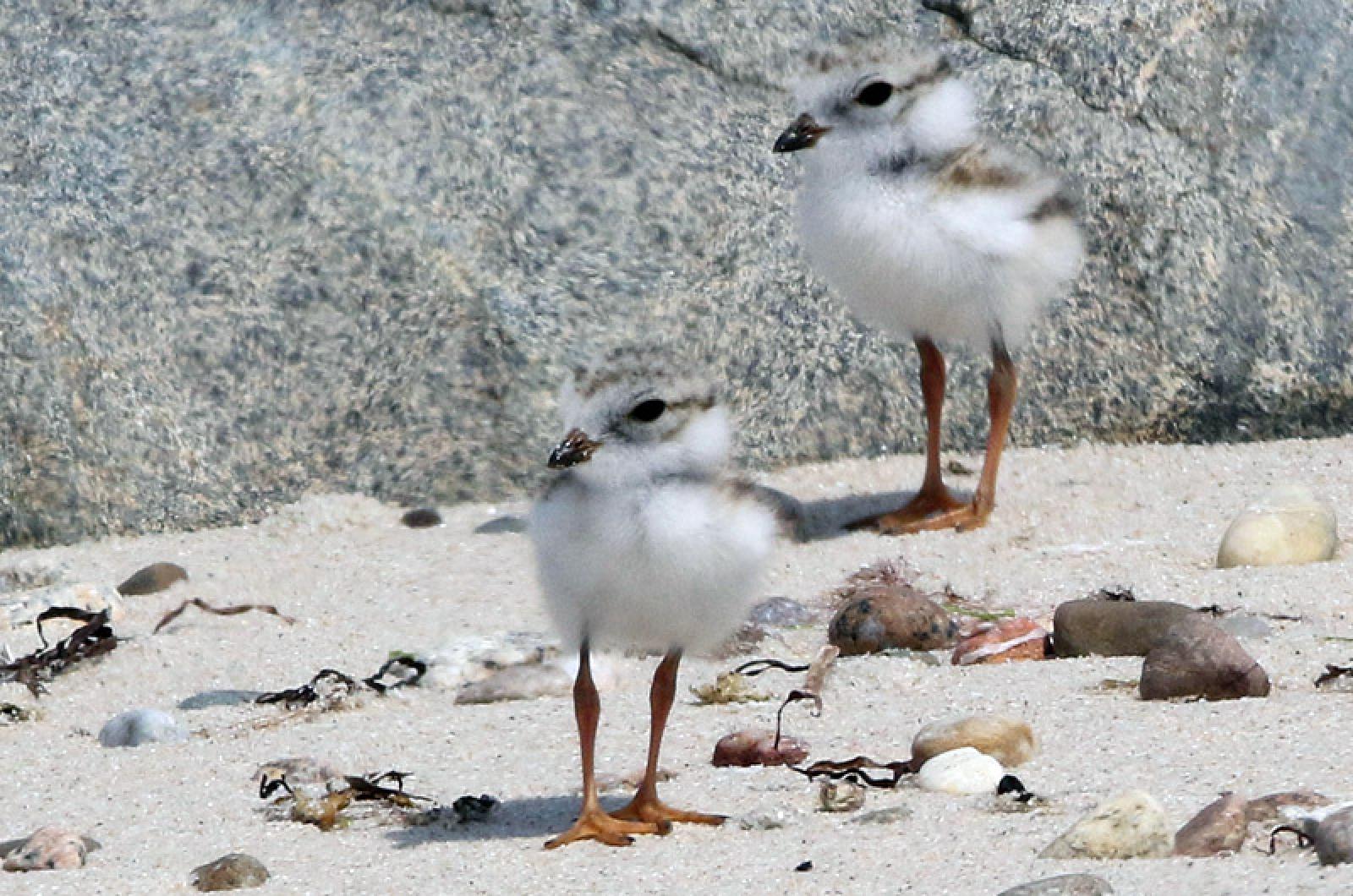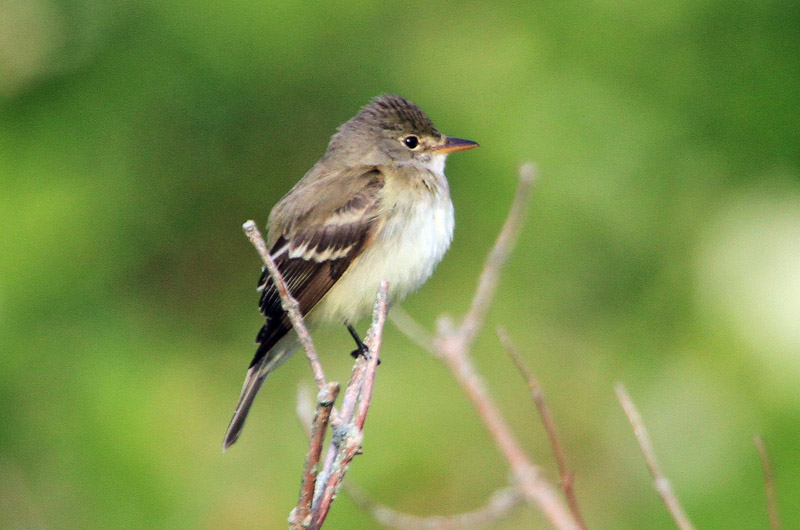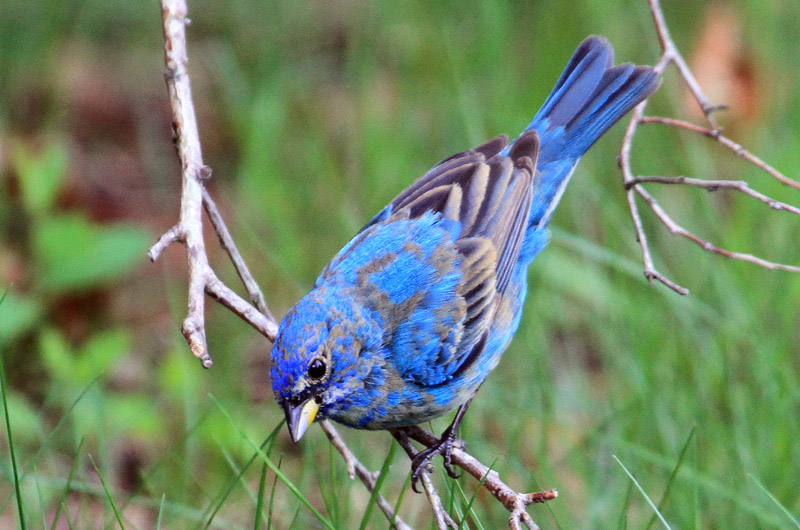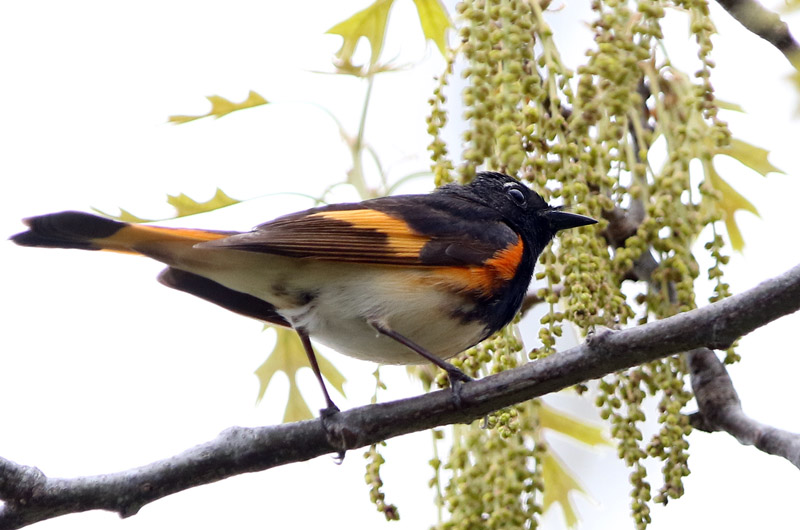So now spring migration is practically over, which seems appropriate since it is June and spring itself is practically over. Most birds are on their breeding grounds now and are busy raising their next generation.
For many birders, our attention shifts to documenting whether the birds we see are nesting. Why do we care? We may understand our environment better if we know why species such as the tufted titmouse and great horned owl establish themselves as a breeding species on the Island in the past 20 years, while species such as the indigo bunting, Acadian flycatcher and fish crow have been here but have not nested (as far as we know).
If they are not breeding, then what are they doing? Maybe they are not old enough to breed, like our gulls that do not breed until they are three or four years old. Or maybe the birds we see are only males, carried here by a storm during their northward migration, and then do not breed because they are unable to find a mate.
Some conventions have been established that enable us to say for certain whether birds are actually nesting. The most obvious one is observing them on a nest. Except for female cowbirds, birds only sit on their own nest. A second obvious confirmation of breeding is to see an adult bird feeding its young. A third obvious confirmation of nesting is seeing a recently fledged bird; they are the ones you see that still have some down feathers visible because their larger outer feathers are not fully developed. However, once they are fully able to fly, these young birds may move long distances and depart from their parents’ territory.
There are several other major behavioral cues that can tell us whether a species is nesting on the Island, and they will be covered in next week’s column.
Bird Sightings
Scott Stephens found some interesting seabirds south of Noman’s Land on June 3 and 4, including four species of shearwaters: greater, sooty, Cory’s and Mans, fulmar, puffin, parasitic jaeger and a carefully identified pomarine jaeger. This is pretty impressive, especially since some of the shearwaters were seen near foraging humpback whales.
Michelle Tynan woke up on May 26 to the chant of a chuck-will’s-widow in Katama. We have already heard them this spring along Dike Road on Chappaquiddick, so it is nice to hear that the Katama population has also returned. Their cadence is notably distinct from that of the whip-poor-will.
On July 2, Jeff Bernier found an interesting black-crowned night-heron that was still molting into its adult plumage. It is interesting because most of our night-herons have finished molting into their adult plumage by the time they arrive back on the Island.
Maura Fitzgerald reports a male indigo bunting is visiting her Aquinnah feeder. This may be a male that has not yet finished molting into its all blue breeding plumage because one of the photos shows some brown in the wing. The blue of this species is remarkable — a much deeper blue than either the blue jay or the eastern bluebird.
Ken Magnuson and Allan Keith were birding Squibnocket on June 4 and found a singing willow flycatcher, and a Virginia rail was calling from the marshy area near the parking lot.
Happy and Steve Spongberg heard a saw-whet owl calling near their house on June 5. This is a late date for this species as they are more common during the winter. I recall that they have occasionally nested here, but confirming their breeding would be difficult as they are active at night when most of us can not see very well. They may nest in correctly sized nest boxes.
Piping plover chicks are now hatching on some of our Island beaches. These beaches will undoubtedly be posted. Please let us know if you find this species on a beach that is not posted. To increase the chick’s chances of survival, it is important to follow the posted restrictions and avoid disturbing the chicks. The chicks hatching now will fledge or be able to fly in early July. If this first nest attempt is not successful they are very likely to re-nest, pushing the fledging date (and beach access restrictions) for this Federally protected species well into August.
Finally, I am impressed with the number of redstarts that are at Cedar Tree Neck, as they are much more common and widespread than I remember. This year, they are easy to find as they are very vocal, singing all day long, and they are one of the most active of all the warblers, constantly flitting from branch to branch. There are four breeding pairs in the parking lot alone, and they are present over most of the sanctuary. They are also present in other locations along the North Shore. I also heard and saw a purple finch near the parking lot at Cedar Tree Neck on May 29.
It is nesting season now and many birder’s attention shifts to documenting nesting habits. Please be sure to report your sightings to birds@mvgazette.com.
Robert Culbert leads Saturday morning guided birding tours and is an ecological consultant living in Vineyard Haven.







Comments
Comment policy »